|
by Harshina Brijlall Crowds of dedicated politicians, NGO leaders, business executives, graduate students, scientists, and water leaders lined up on March 22, 2023 to enter the United Nations Headquarters in New York for the first UN Water Conference held in nearly 50 years. As a delegate representing the University of Waterloo Water Institute and the forWater Network, I was honoured to attend this historic event. What is SDG 6?Sustainability Development Goal (SDG) 6 (clean water and sanitation), set by the United Nations, highlights the need to ensure the availability and sustainable management of water and sanitation for all. The goal of the UN Water Conference was to create Water Action Agenda. Through interactive dialogues, plenaries, and side events, stakeholders would make commitments to the Water Action Agenda to ensure that SDG 6 is achieved by 2030. As a PhD student studying cyanobacterial communities, I aim to identify potential gene toxin markers and refine sampling protocols to manage harmful algal blooms in forested watersheds and improve drinking water quality. Several side events and panels discussed freshwater ecosystems' challenges, specifically issues found in rivers, wetlands, lakes, and groundwater. Here are a few of my reflections from the sessions I attended: Slide show: 1) Manhattan, entrance to "The Water Tunnel" exhibit, UN; 2) forWater Network members Harshina Brijlall, Dr Monica Emelko, and Dr Roy Brouwer attending the UN Water Conference; 3) Roadmap to ensuring SDG 6 is achieved by 2030; 4 & 5) The Freshwater Challenge side event; Restoring rivers & wetlands"The Freshwater Challenge" side event, aims to restore 300,000km of degraded rivers and 350 million hectares of degraded wetlands globally by 2030. Countries that attended this event stated their commitments to enhance water security by protecting the biodiversity of wetlands and rivers while reversing nature loss by making commitments. "Nature is one of our greatest allies - helping to protect communities against climate change." - Terry Duguid, Parliamentary Secretary to the Minister of Environment and Climate Change Canada, Freshwater Challenge - Mobilising action to restore freshwater ecosystems Canada contains over 20% of the world's freshwater and is home to vast diversity of fauna and flora. Terry Duguid reported that Canada has started to develop an updated national biodiversity strategy action plan that will include provincial, territorial, and Indigenous stakeholders. Duguid emphasized strengthening the roles of Indigenous and women in water management and reported the creation of a new Canada Water Agency. Ocean-water continuum is imperativeAt the Source to Sea connectivity side event, The World Bank representative emphasized that a holistic approach to sustainable integrated management of coastal and marine areas is vital. Many SDG 6 targets cannot be attained without meeting SDG 14 (life below sea) targets. Ocean-water continuum is imperative, as freshwater pollutants can profoundly impact marine ecosystems. Several stakeholders during the conference made commitments to the Water Action Agenda to aid in the sustainable management of coastal and marine areas. New apps aiding lake monitoringOn UN Web TV I viewed the side event on Sustainable Lake Management, where The Freshwater Unit from the United Nations Environment Programme launched a new portal for lakes an app that can aid in tracking a region/country's progress on SDG 6.6. The UNESCO World Water Quality Portal (WWQP) also collects water quality parameters such as turbidity, suspended solids, harmful algal blooms, chlorophyll-a, dissolved organic matter, water surface temperature, and water altimeter via remote sensing and satellite Earth observation. This side event emphasised the growing concern for harmful algal blooms and eutrophication within forested watersheds. Not only was I excited to hear about the Sustainable Lake Management Resolution and innovations presented by stakeholders during this event, but the discussions contextualized my research to a global perspective. Transboundary waters & RRMSixteen years ago, I immigrated from Durban, South Africa, to northern Saskatchewan. Both places that I call home differ in water quality, water treatment processes and management of forested watersheds. In both areas, the people who suffered the most from decreased drinking water quality lived in remote, rural, and marginalized communities. As a South African and Canadian, I was excited to attend side events and panels discussing transboundary water management, cross-sectoral partnerships, Indigenous science, and women and girls' access to WASH (water, sanitation, and hygiene). Watersheds that are shared by two or more countries are transboundary waters, such as the Great Lakes. Many side events and plenaries emphasized integrating policy and science to enhance transboundary water management. Discussions involving transboundary water management and cross-sectoral partnerships included connecting public and private institutions to make commitments on early warning systems for all and establishing water quality guidelines. Water with personhoodMany Indigenous representatives from North America and Southern American communities were involved in the discourse around permanently mandating and treating a water body as an entity under the law. Stephanie Thorassie, Executive Director of Seal River Watershed Alliance in Manitoba, described protecting forested watersheds as "preserving a set of lungs for the earth." She specified that the future of water will be secured if youth are engaged in their communities and watersheds. Women & girls & access to clean waterMany panels and events centred on women and girls' access to water, sanitation, and hygiene (WASH). In many countries, lack of access to sanitation and hygiene increases disease and urinary tract infections and reinforces menstruation taboos. "Women have a right to privacy and a dignified life."- Mrs. Anu Gautam, knowledge management specialist, UNICEF, Empowering Communities through Access to Clean Water and Sanitation: Solutions for Health, Gender Equality, and Climate Resilience Women are not involved in household decision-making regarding sanitation or WASH policy-making. Accelerating women's inclusion in water includes ensuring gender-sensitive data collection, support for mitigation and safety, and forming multistakeholder platforms to exchange ideas and promote investment in gender equity. Closing ceremony commitmentsAround 10,000 participants attended the UN Water Conference (online and in-person). However, only a few civil society representatives could attend the closing ceremonies. Dr Monica Emelko and I gained passes to attend by waiting in line for 2+ hours. The outcomes identified in the ceremony definitely made our wait worthwhile. The goal and outcome of this UN Water Conference was to build a framework to discuss the Water Action Agenda. Over 689 commitments to the Water Action Agenda were registered during the closing ceremony. More were added thereafter and now there are more than 700 commitments in the Water Action Agenda. In July 2023, all commitments to the Water Action Agenda will be reviewed. A UN Special Envoy on Water will represent water management and discuss how to progress and achieve the goals of SDG 6 in future UN conferences and meetings. "Water can never be left out of any of the UN agenda, strategies, and plans of action as of today. Water is our gamechanger." - Prime Minister of Aruba, Evelyn Wever-Croes, Closing Ceremony Main takeawaysAttending the UN Water conference and witnessing successful women, young leaders, and people of colour on a global stage discussing SDG 6 was inspiring. As a biology student, engaging and discussing water management and treatment with engineers, politicians, and planning and environmental studies students was fantastic. I networked with international graduate students and professionals I would never have had the opportunity to meet at a biology-focused conference. The conference expanded my perspective on how the challenges of managing forested watersheds and drinking water treatability differ across the globe; some countries face drought, while others have large freshwater systems facing eutrophication, and some face political struggles endangering community and water security. As I drink a glass of water and write this reflection, I have a greater understanding of how global initiatives for WASH are complex and messy. However, I hope to witness the outcomes and results of many stakeholders’ commitments to the Water Action Agenda. Harshina Brijlall, a PhD student in Kirsten Müller's lab at the University of Waterloo, was selected to be part of a delegation asked to attend the UN Water Conference in New York in March.
0 Comments
Leave a Reply. |
forWater NetworkThe Network provides insights into new scientific research for safe, secure drinking water---globally---which starts with resilient forests Archives
October 2023
Categories |

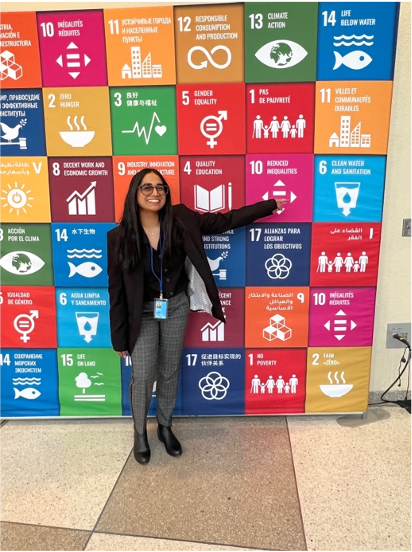
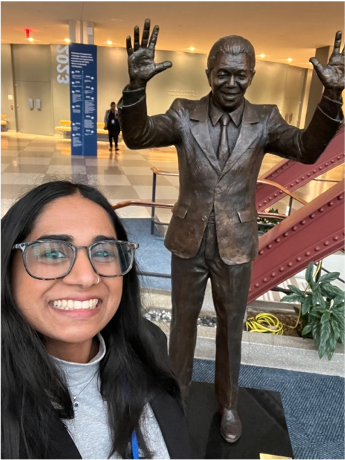
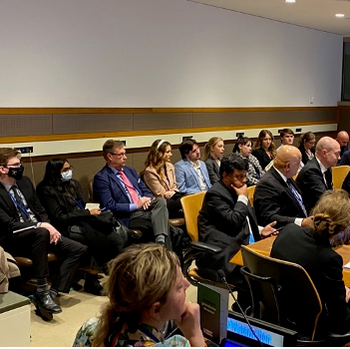
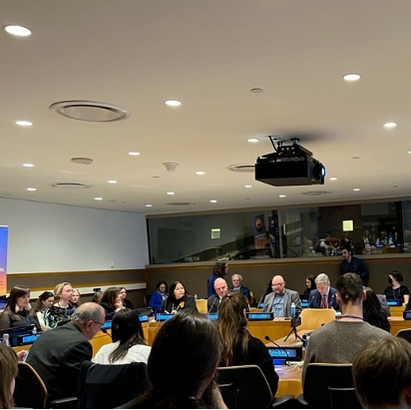

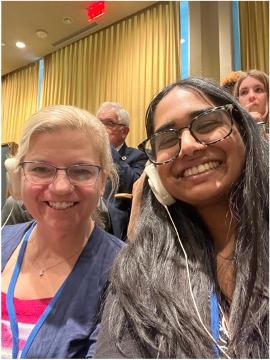

 RSS Feed
RSS Feed

